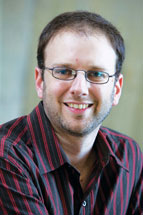From the editor: From technology to dance
 |
| Photo: Reidar Hahn, Fermilab |
Symmetry often discusses the connections between particle physics and other parts of science, nature, and culture. This issue shows how broadly particle physics pervades other aspects of life.
The primary justification for doing particle physics is the science itself; but along with its discoveries we see the development of many technologies crucial for advancing other areas of science. Superconducting radio-frequency acceleration technology is one key example. Designed for high-energy particle collider experiments, it has uses in X-ray sources, medical accelerators, and myriad other accelerator applications.
In this issue of symmetry we start a new series about applications of accelerators with the story of how theyre being used to implant silver ions into carbon heart valves to try to make them more biologically compatible. Its just one instance in which accelerators are playing significant roles in science, technology and industry.
On October 26, a symposium on Accelerators for Americas Future will take place in Washington, DC, with sessions addressing medicine and biology, energy and environment, national security, industrial applications and production, and scientific discovery. Well bring you coverage of that meeting online at symmetrymagazine.org.
As examples of the interplay between particle physics and culture, we feature in this issue several stories on physics in Manga, the primarily Japanese form of comics. A leading Manga artist, Takuya Uruno, drew our cover; Youhei Morita from KEK in Japan writes about the influence of Manga in his life and education; and we show a gallery of Urunos Manga drawings, commissioned by KEK to help communicate particle physics to different audiences.
A very different form of science communication is being explored by well-known choreographer Liz Lerman. Members of her dance troupe visited the European particle physics laboratory CERN to develop a performance, attracting curious onlookers as the dancers explored the unusual physical space of the Large Hadron Collider and its surroundings. Lerman speaks with symmetry about her collaboration with physicist Gordy Kane, how she learned about the science at CERN, and how she began to find new ways to express those concepts within her field of expertise.
Particle physics is done for the sake of scientific discovery, but the field shows its value to society not only through its discoveries but also through the wide-ranging connections to other human endeavors. Its a dynamic and vibrant set of connections that benefits everybody involved.
David Harris, Editor-in-chief
Click here to download the pdf version of this article.


